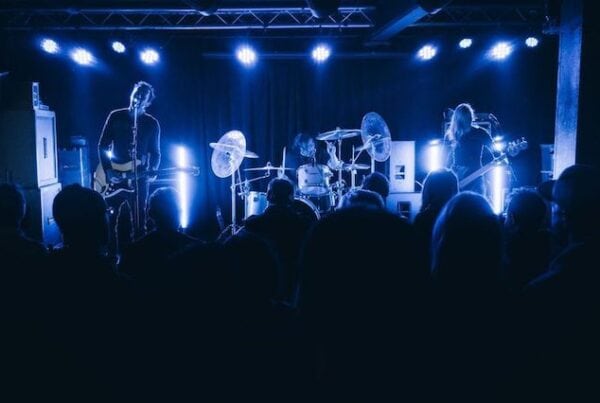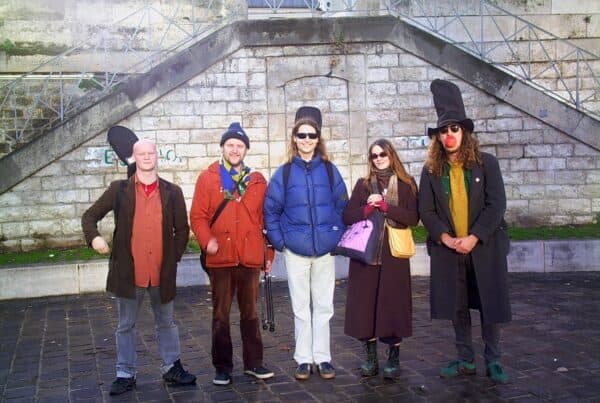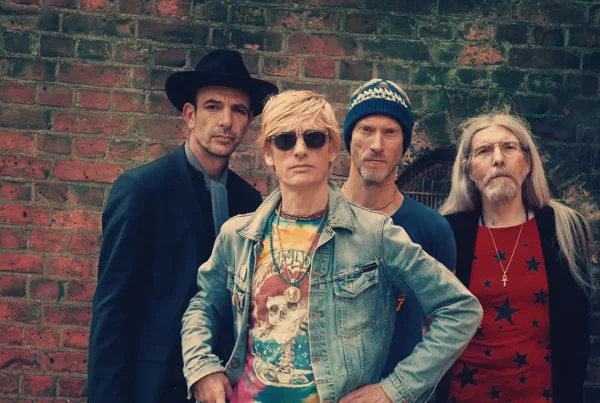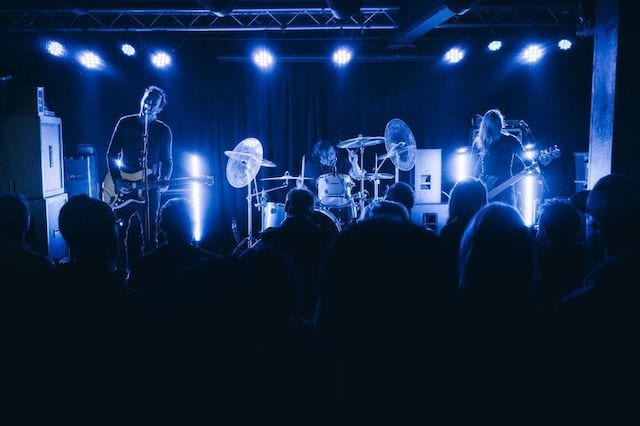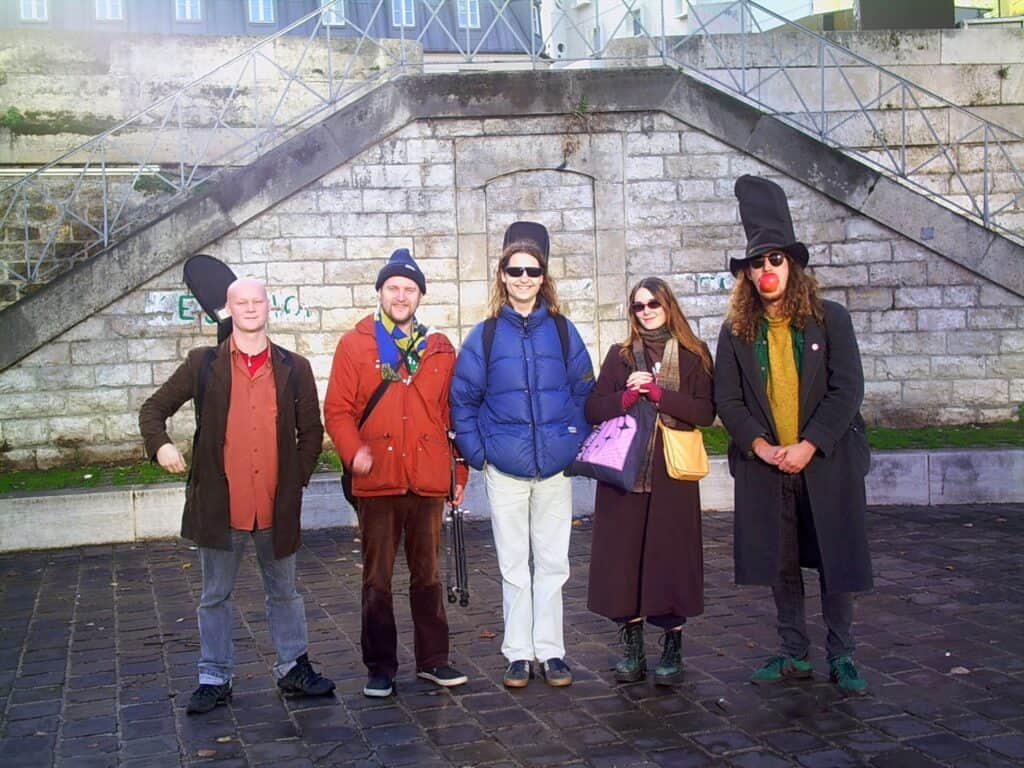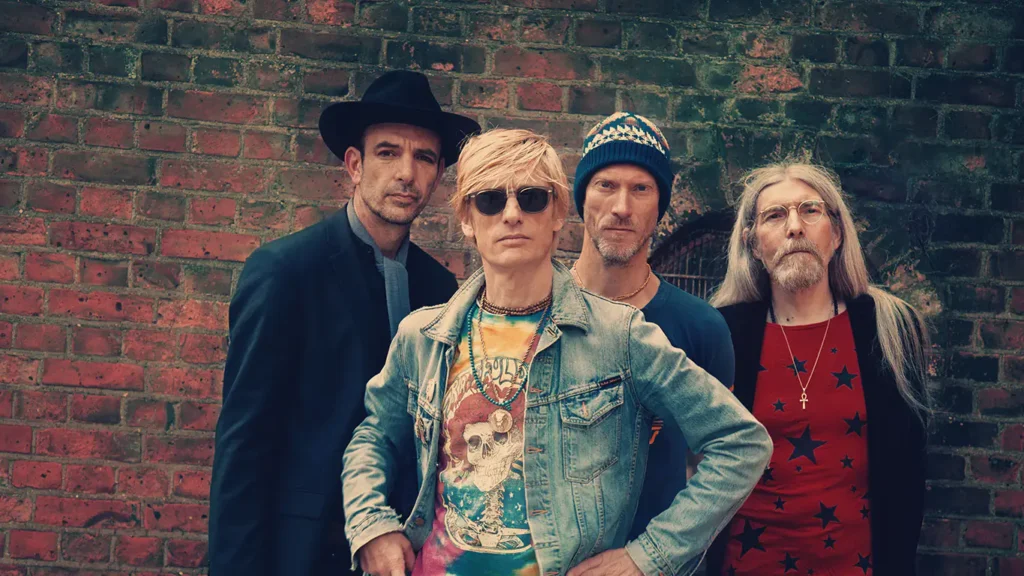Ghostrunner 2 released in October of 2023 and it was received well, even picking up a nomination for Best Action Game at The Game Awards 2023. Arkadiusz Reikowski and Marek Lorenc, Ghostrunner 2’s composer and lead sound designer -respectively, graced us with some answers to our burning questions.
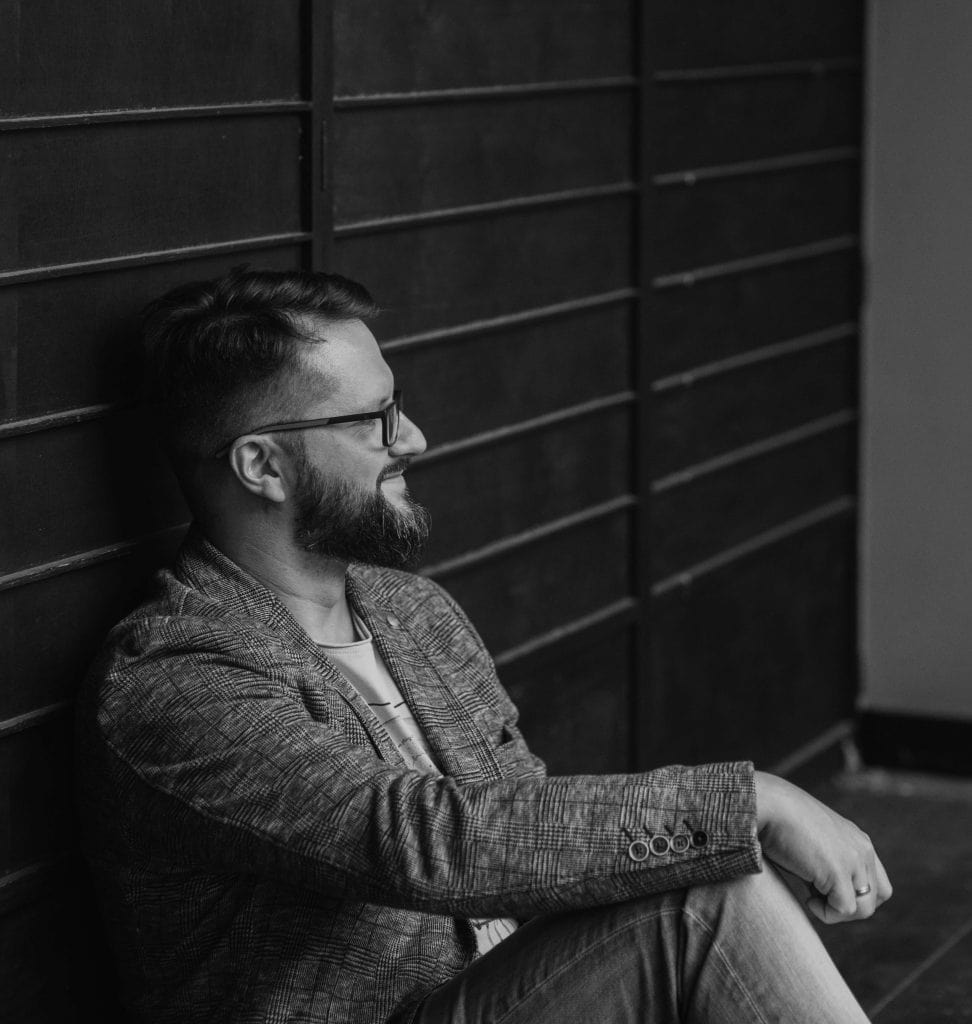
Arkadiusz Reikowski, Composer.
Firstly, how did you manage to make the music feel so organic to the world and the gameplay? The words cyberpunk and electronic don’t typically elicit the imagery of organic, so how did you manage that?
The thing is, electronic music can also be organic! Especially when it comes to processing the live recordings of instruments through electronic gear like modular synthesis. I became addicted to modular synthesizers a while ago and I use them all the time. I really like experimenting with sounds and creating something entirely new out of the ordinary things. The creative approach to work is one of the most important aspects in making music, in my opinion. We have lots of Cyberpunk music out there and especially with the outside world of Ghostrunner 2 we decided to go a different path. Using processed throat singing as the main layer for The Worm boss fight turned out to be a really good idea but also there are lots of Taiko drums layers which are also processed and mixed with the pure electronic sounds and kicks to make the sound more present.
How hands-on were you during the development of the game? Did you work in tandem with the level designers or work more from concepts and raw gameplay along the way?
I can say that I was heavily involved from the very beginning. Actually I had to create the first tracks for the levels which were just gray boxes and didn’t really have the gameplay part set in stone. Much of it was to be iterated and adjusted so sometimes it was hard to make music by only imagining stuff. I had great guidance though and the game designers really knew what they wanted to achieve so I was really happy that almost everything fits the final vision of the levels. In my opinion, working as a team always gives the best results. A game like Ghostrunner 2 needs to have each of the elements to work with each other sort of like a clock so working together as a team is absolutely crucial.
Are there any honourable mentions for bands or games or films you used as inspiration when creating the incredible audio for Ghostrunner 2?
Absolutely. I often find inspiration in movies when it comes to sound so for me it was Blade Runner (both of them!), Dune but also music from movies like Annihilation and Akira or Ghost In The Shell (anime). I love these soundtracks. Regarding games, Doom by Mick Gordon will be an inspiration (but also Prey which I think is an excellent soundtrack), Nier Automata and lots of others.
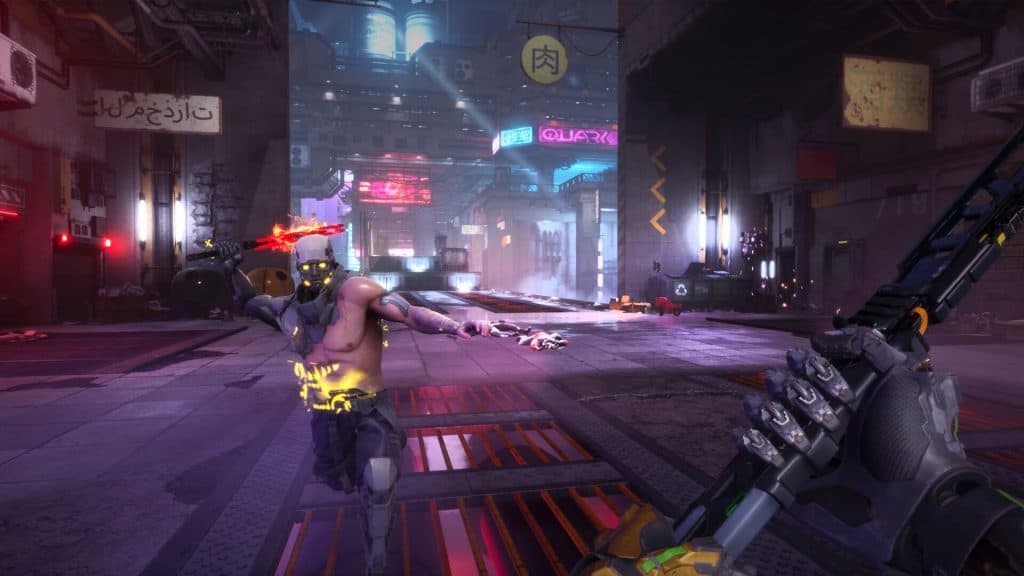
How did you manage to create such an interesting and unique soundtrack for those of us that will be listening to the same selection of music as we repeat certain levels and sections of the game?
The structure of the gameplay really helps to achieve the effect of the lack of boredom I think. I mean, the music itself can’t be repetitive but the flow of the game feels like you just never stop, even when you fail the run. You’re just instantly back in the action. So I must say that my job was easier, thanks to excellent game design.
Of course one of the pillars during our cooperation was to create something hypnotic when it comes to basically all aspects of the game, music included. Soundtracks are implemented in a way that you feel and hear the progression the further you are during your run, we made different parts and also transitions for each of the tracks to ensure that the music adapts to the player’s progression. This is what we call interactive music and it’s a unique feature to game’s scores.
Marek Lorenc, Lead Sound Designer.
How did you expand on experiences from the first game to develop the sound design for the sequel?
In Ghostrunner 2 we decided to go with “it’s evolution, not revolution” approach also in sound. Transfer to audio engine middleware FMOD helped a lot, by giving us more control over sound behavior and flexibility of design from both creative and technical points of view.
During the development of the game did you try to approach any of it differently? Did you try anything new or different for the more open areas of the game, such as the new motorcycle sequences?
Inside the Tower we kept with a similar sound scope but made it more dense with surrounding sounds of distant gunshots, advertisements and a variety of city rumble. That makes a big contrast to the outside wastelands which we traverse with motorcycles. The desolation and apsense of life in wastelands gave us a big opportunity to fill it with subtle sounds of wind, sand and rust while also keeping the feeling of emptiness and isolation.
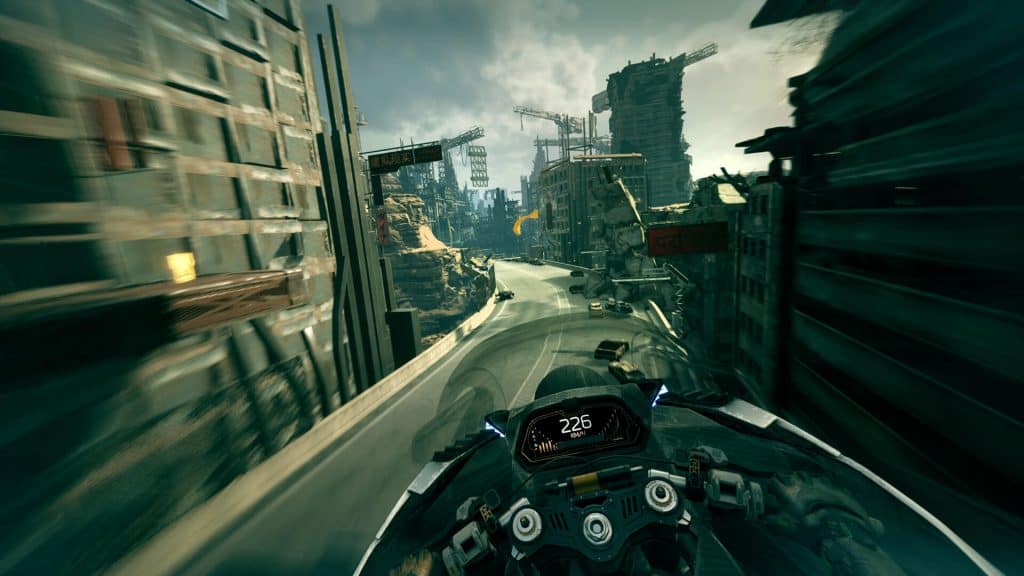
How hands-on were you during the development of the game? Did you work in tandem with the level designers or work more from concepts and raw gameplay along the way?
Yes and Yes. While concepts and raw gameplay allows to make a strong base for sound both in artistic and technical way, keeping in touch with level designers helped to clarify the most satisfying solutions.
Are there any honourable mentions for bands or games or films you used as inspiration when creating the incredible audio for the game?
It’s hard to pinpoint the most influential inspiration. We took a variety of trends and genres from modern productions to old-school ones.
Now the game has been out for a while and has been received well, has there been anything that has surprised you about the fan response? Or anything you would’ve approached differently?
I’m satisfied with our fans’ response, we put a lot of work into this sequel and good reception is very meaningful for us. About doing things differently, I think on the outside we have achieved what we wanted to. On the inside of the project I would only take a different solutions to some sfx implementations, but that’s a technical matter which does not affects receivers
How did you manage to create such an interesting and unique audio experience for those of us that will be listening to the same selection of music as we repeat certain levels and sections of the game?
By always asking ourselves what is the characteristic of a specific location, is it more commercial area? maybe a gang war turf? Is it more or less windy and how will it affect other elements of the environment?
And finally, after another release of a stellar game, what’s next?
A next project with new opportunities and new experiences.
Ghostrunner 2 is out now on PC, PlayStation 5, Xbox Series X|S
Writer.

